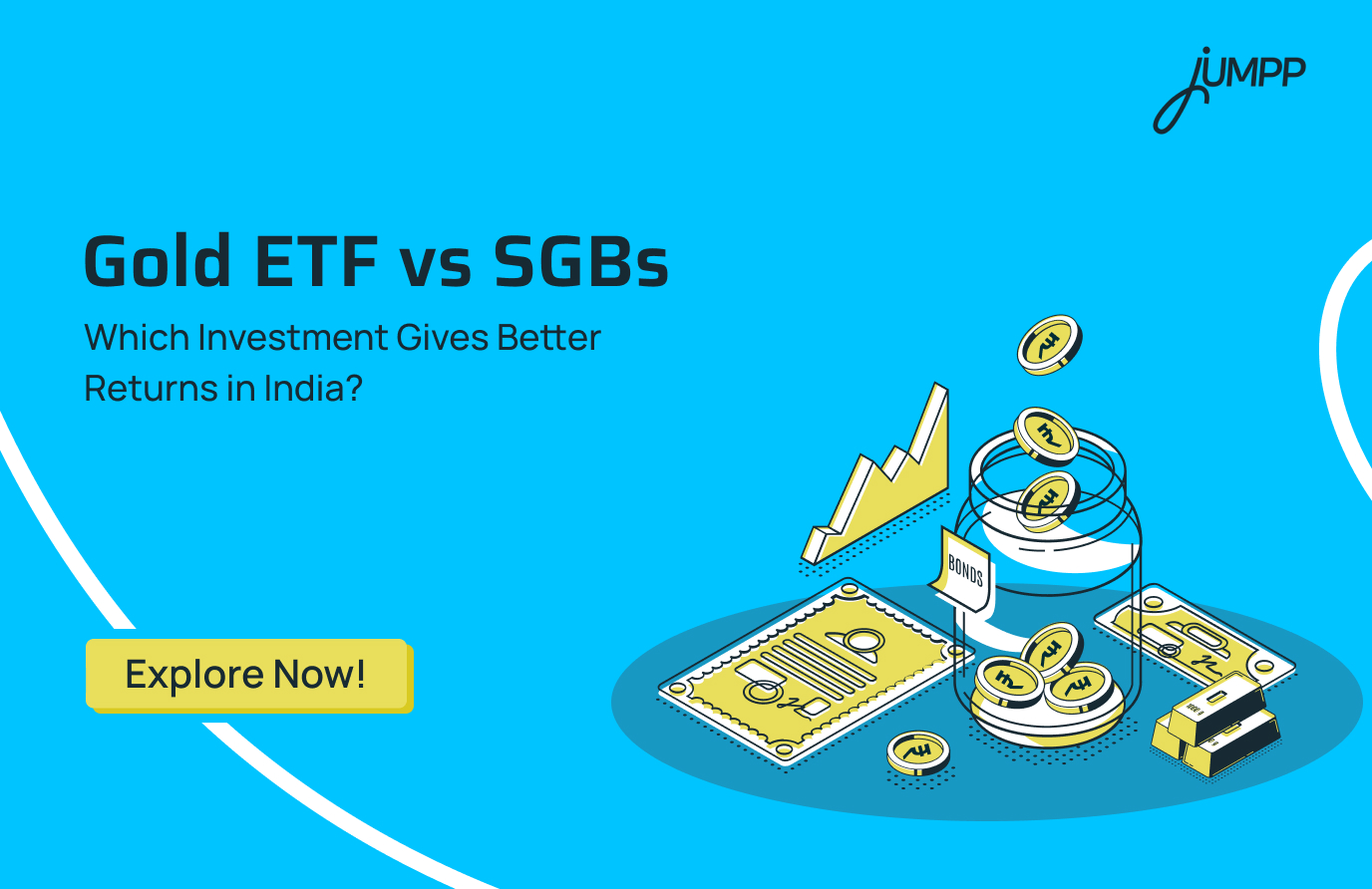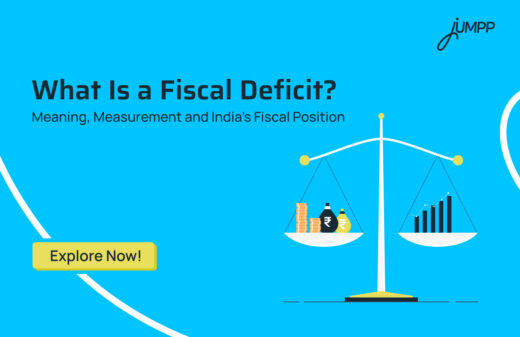SGBs vs Gold ETF: Can Sovereign Gold Bonds Really Beat Gold ETFs?

SGB vs Gold ETF is one of the most debated questions in today’s time. Gold ETFs give you liquidity and flexibility. On the other hand, Sovereign Gold Bonds give you safety, fixed interest, and tax efficiency.
Gold has always been more than just a metal for us. It is trust, it is wealth preservation, it is that one asset families pass down without second thoughts. But the way we invest in gold has changed. The shine is no longer limited to bangles and coins in lockers. Today, it is about products like Gold ETFs and Sovereign Gold Bonds that let you hold gold without physically holding it.
But what is the real difference when it comes to gold ETF returns and sovereign gold bond returns in 2025?
Let us discover!
SGBs vs Gold ETFs- How Do They Differ?
Both Gold ETFs and Sovereign Gold Bonds let you invest in gold without physically holding it. However, they work very differently.
SGBs come with the government’s backing, a fixed 2.5% annual interest, and the sweet benefit of tax-free capital gains if you hold them to maturity after eight years. But the interest you earn is still taxable.
Gold ETFs, on the other hand, are managed by fund houses and track only gold price movements, offering no extra interest. They are highly liquid and tradable on stock exchanges. But they come with expense ratios, brokerage fees, and taxes on capital gains, depending on how long you hold them.
Sovereign Gold Bonds Returns vs Gold ETF Returns: Which Is Better in 2025?
In August 2025 alone, Gold ETFs saw inflows of over ₹2,189 crore, taking their Assets Under Management to a record ₹72,495 crore. In the last year, average Gold ETF returns touched 47%, with some even hitting the 50% mark.
On the other hand, Sovereign Gold Bonds have a reputation for delivering not just gold-linked returns but also fixed interest, with some older series giving over 250% by maturity.
Now, should you choose the liquidity and ease of Gold ETFs or the government-backed safety and tax advantages of SGBs?
Let’s see!
SGBs vs Gold ETFs – The Facts Every Investor Must Know
Let’s explore SGBs vs Gold ETFs and see which path gives you the real sparkle in returns.
| Feature | Gold ETFs | Sovereign Gold Bonds (SGBs) |
| Issuer | Fund houses/Asset Management Firms | Government of India (RBI) |
| Liquidity | High (traded on the exchange anytime) | Lower (tradable but with lock-in) |
| Tenure | No fixed tenure | Fixed 8 years (exit after 5 years) |
| Interest | No interest | Fixed ~2.5% p.a. interest paid semi-annually |
| Capital Appreciation | Based on the gold market price | Based on the gold price + interest |
| Tax Benefits | Subject to capital gains tax (long-term after 3 years, short-term before 3 years). | Capital gains tax-free at maturity (8 years); interest income taxable |
| Investment Size | Buying as low as 1 gram equivalent | Minimum 1 gram |
| Recent Status | As of the latest update in the Union Budget 2025, the government aims to discontinue SGBs. The RBI has not announced any new issues for the fiscal year 2024-2025. The last issue (SGB 2023-24 Series IV) was in February 2024 at ₹6,213 per gram (for online applications). | It continues to be traded on the stock exchange. Some top-performing Gold ETFs in 2025 include Axis Gold ETF, ICICI Prudential Gold ETF, HDFC Gold ETF, Kotak Gold ETF, and Nippon India ETF Gold BeES. |
| Risk | Market risk | Lower risk due to government backing |
Please note- The government has announced that no new Sovereign Gold Bonds (SGBs) will be issued after February 2024 due to high borrowing costs. However, existing SGBs continue to remain valid and pay interest. No further updates or reversals have been reported.
What is Sovereign Gold Bond (SGB)? Who Issues It?
Sovereign Gold Bonds (SGBs) are government securities denominated in grams of gold. They serve as a substitute for holding physical gold.
As investors, you have to pay the issue price in cash and redeem in cash at maturity. Sovereign gold bond returns are linked to prevailing gold prices.
Who Issues SBGs in India?
The Reserve Bank of India issues these bonds on behalf of the Government of India.
Update 2025 – In the Union Budget 2025, the discontinuation of new Sovereign Gold Bond (SGB) issuances was announced. While existing SGBs remain valid and continue to pay interest, the government has officially confirmed that no new SGB tranches will be issued after February 2024, mainly owing to high borrowing costs. As of now, there has been no reversal or further update on this decision
Investment Limits in SGBs
- Minimum: 1 gram of gold.
- Maximum: 4 kg per individual/HUF per fiscal year; 20 kg for trusts and similar entities.
- Each family member can invest separately.
- In case of joint holding, limits apply to the first holder.
Am I Eligible to Invest in SGBs?
If you live in India, you’re eligible to invest in Sovereign Gold Bonds
- SGBs are available to residents of India (as per FEMA 1999).
- The list of eligible investors includes Individuals, HUFs, trusts, universities, and charitable institutions.
- It allows joint holding
- Minors can also invest through a guardian.
- NRIs cannot newly invest. But if a resident investor later becomes an NRI, they can continue to hold until redemption.
What is the Sovereign Gold Bonds Return in 2025?
Sovereign Gold Bonds (SGBs) in 2025 offer you a fixed annual interest rate of 2.5%. This interest is paid semi-annually, in addition to capital appreciation linked to the market price of gold.
Recent data for the SGB series issued in 2019-20 shows that investors who opted for premature redemption on September 11, 2025, earned a total return of about 156%, which includes both capital gains and interest.
Sovereign Gold Bonds Returns
The returns from SGBs have two components:
- Gold Price Appreciation – The value of the bond rises with gold prices. This ensures that your investment mirrors the market value of gold.
- Fixed Interest of 2.5% per annum – On top of gold price gains, you earn a guaranteed 2.5% interest on the initial investment amount, credited semi-annually.
What are the Advantages of Sovereign Gold Bonds (SGBs)
Here’s why Sovereign Gold Bonds shine brighter than most gold options.
- Capital Protection – The value of SGBs is directly linked to gold prices, so the quantity of gold you pay for is always protected. At redemption, you get the prevailing market value.
- Fixed Interest Income – Unlike physical gold or Gold ETFs, SGBs give an additional 2.5% fixed interest per annum.
- Tax Efficiency – There are no capital gains taxes if you hold SGBs till maturity.
- No Storage or Purity Issues – Unlike jewellery or coins, there are no making charges.
- Government-Backed Security – Since these are issued by the RBI on behalf of the Government of India, they are one of the safest investment instruments.
- Long-Term Wealth Creator – Historically, some SGB tranches (like 2017-18 Series II) delivered over 250% returns at maturity, making them a strong wealth-building tool.
- Collateral for Loans – Bonds are eligible to be used as collateral with banks and financial institutions.
What are the Disadvantages of SGBs?
SGBs come with their own set of drawbacks. Let’s see what these could be!
- They have a fixed tenor of 8 years (with early exit only after 5 years).
- These are not as liquid as Gold ETFs; secondary market liquidity can be limited.
- Your interest earned is taxable.
- If gold prices fall, investors face the risk of lower capital appreciation.
- Government policy changes affect the SGB issuance.
What are Gold ETFs?
Gold Exchange Traded Funds (Gold ETFs) are investment instruments that track the domestic price of gold. These are traded on stock exchanges just like shares.
Each unit of a Gold ETF usually represents 1 gram of gold, backed by physical gold of high purity that is securely stored by the fund house. As investors, you can buy and sell these units through their trading and demat accounts.
Why Should You Choose Gold ETFs over Physical Gold?
Traditionally, gold in India has been bought in physical form, i.e., jewellery, coins, or bars. While these forms carry emotional and cultural value, they also come with limitations:
- Purity concerns
- Storage and safety issues
- Additional making charges
Gold ETFs solve these problems by offering multiple benefits.
What Are the Latest Gold ETF Returns?
Returns from Gold ETFs are entirely linked to the market price of gold. Unlike SGBs, they do not offer any fixed interest component. However, they have delivered excellent performance in recent times:
- 1-Year Performance – In 2025, Gold ETFs in India delivered close to 47% average returns, with some funds nearing 50%.
- Popular Funds – For instance, the SBI Gold ETF delivered around 46.58% 1-year returns. Other famous funds include Nippon, HDFC, and IDBI. Axis, etc.
- Expense Ratios – These range from 0.3% to 0.8%, slightly reducing net returns but still competitive compared to the costs of physical gold.
What are the Advantages of Gold ETFs
You can invest in gold without worrying about purity.
These offer-
- Assured purity
- Secure custody
- No making charges
- No risk of theft
- Electronic holding via a demat account
This makes Gold ETFs a modern and efficient substitute for buying physical gold.
What are the Disadvantages of Gold ETFs
- Market risk – Your returns are entirely dependent on gold prices, which can fluctuate sharply.
- No interest income – Unlike SGBs, ETFs only mirror gold’s price movement. There is no guaranteed extra return.
- Demat dependency – Investors require a demat and trading account to execute transactions.
Grow your wealth with the best investment app to invest in Gold ETFs and more!
Taxation of Gold ETFs
- Short-Term Capital Gains (STCG) – If sold within 3 years, gains are taxed as per your income tax slab.
- Long-Term Capital Gains (LTCG) – If held for more than 3 years, your gains are taxed at 20% with indexation benefit.
- No special exemptions – Unlike SGBs, ETFs don’t enjoy tax-free status at maturity.
Final Word
Gold will always remain part of the Indian financial psyche. But in 2025, the smarter question is not whether to invest in gold, but how to invest in gold.
Gold ETFs give you agility. Sovereign Gold Bonds give you a reward. The right portfolio has room for both.
Want to understand how ETFs stack up against other investment options?
Check out our detailed guide on ETF vs Mutual Fund to make smarter investment decisions.
Gold ETFs vs Sovereign Gold Bonds (SGBs)- FAQs
SGBs are better for long-term investors with 2.5% fixed interest plus tax-free maturity gains. Gold ETFs suit short-term investors seeking liquidity and easy trading.
Gold ETFs give no fixed interest, carry expense ratios, and are subject to gold price volatility. They also require a demat account and don’t provide physical ownership.
SGBs earn interest, have no storage risk, and enjoy tax-free maturity benefits. On the flip side, physical gold offers instant liquidity and cultural value but no financial advantages. You can easily compare and choose.
Yes, Gold ETFs are regulated and backed by physical gold, eliminating theft or purity risks. However, they still carry market risk linked to gold prices.
No, SGBs cannot be converted into jewellery or bars. They exist only in paper or demat form and can be redeemed or sold for cash.
Some of the top Gold ETF options include Mirae Asset, Tata, IDBI, SBI, ICICI Prudential, and Nippon Gold BeES. They offer ~47–49% 1-year returns with low expense ratios.






